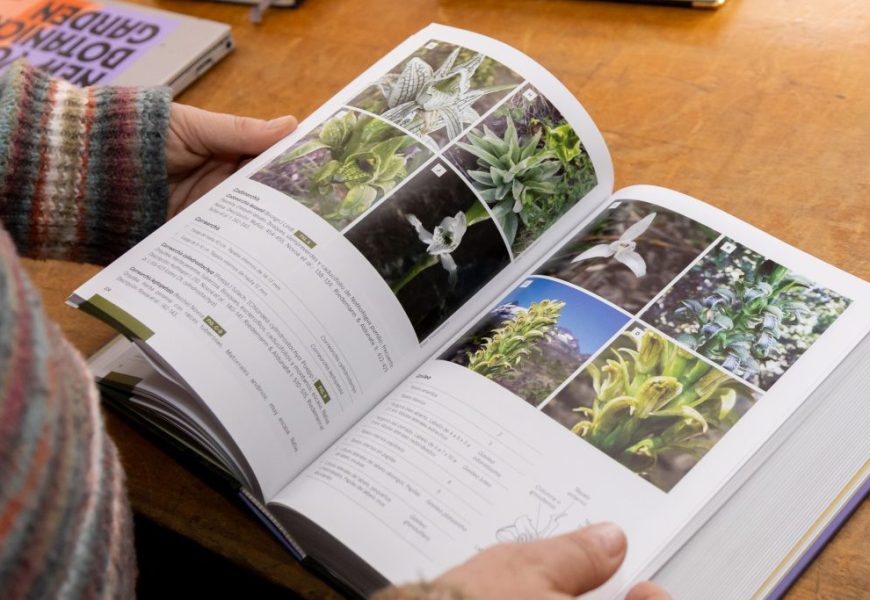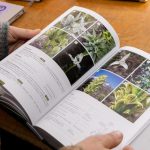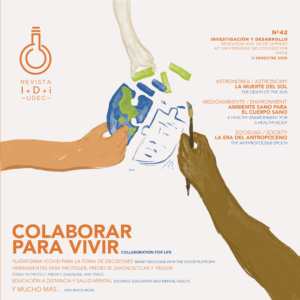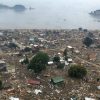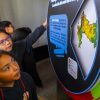By: Paulina Hernández Jara, Journalist – Faculty of Natural and Oceanographic Sciences / paulinahernandezj@gmail.com
Images: Paulina Hernández Jara
Leer en español
A long line of people trailed outside the University of Concepción auditorium, waiting patiently for their turn for one of the authors of the book “Flora of the Biobío Region” to sign their copies. The text, written by Sebastián Teillier, Carlos Baeza, Alicia Marticorena, and the late Eitel Thielemann, is an exhaustive work that identifies approximately 1,500 plant species in the region, with almost 1,110 of them native. A true treasure.
The book was presented at an emotional ceremony held on July 10th, 2025, before more than 200 people who filled the auditorium. The activity was moderated by Dr. Fabiola Cruces López, Director of the Department of Botany of the Faculty of Natural and Oceanographic Sciences (FCNO, in Spanish), who expressed the feeling of the community: “For us, this is a tremendously proud moment. It is a work of many years of research where we finally see the fruit that is this wonderful work.”
The creation of the book was described by its authors as the realization of a long-standing dream of many generations. “This is an idea that came from our great teachers. It was always a desire to have a regional flora record,” commented the co-author and curator of the CONC Herbarium, MSc. Alicia Marticorena Garri, who highlighted the role of her colleague, Sebastián Teillier, as a great promoter of the project.
For his part, Dr. Carlos Baeza Perry, co-author and Director of the CONC Herbarium, said, “I think it was a debt we had to the community in general and to the University itself. The concrete possibility of making this book appeared with digital photography and with the BIODATA Project, which allowed us to have the bones that we filled with information, with key aspects, with history, over three years.” Dr. Sebastián Teillier Arredondo, also a co-author, added the emotional component by recalling the “super-talented” team they had assembled, regretting the loss of Eitel Thielemann in the midst of the process in February 2024.

The botanical wealth of the Biobío
The relevance of the work was highlighted by a panel of experts who attended the launch. Alberto Bordeu Schwarze, Head of the Department of Protected Wild Areas of CONAF, described it as an essential contribution. “For us, as CONAF, it is fundamental, not only for protected areas, but to know where the most valuable species are located. It is an instrument for management that will be us for a long time,” he said, revealing that the institution acquired three copies for its different units.
From the academic world, Dr. Aníbal Pauchard Cortés, Director of the Institute of Ecology and Biodiversity (IEB), congratulated the authors and stressed that “this book is very complete, because it has a whole introduction regarding the history of botany in the region, the flora and its ecosystems and, of course, all the valuable botanical knowledge.”
The ceremony was also attended by UdeC’s Vice-Rector for Institutional Relations and Outreach, Dr. Ximena Gauché Marchetti, who emphasized the university’s role in disseminating knowledge. “One of the great challenges of the University is how we get research to really reach people. Publications of this high quality are one of those ways, so it is especially satisfying to be able to support them. It will certainly be a concrete and robust contribution.”
Both Dr. Cruces and Dr. Baeza concluded by paying tribute to the generations of researchers and academics who, during the more than 100 years of the CONC Herbarium, built the foundations for this work, a legacy that now belongs to the entire community.
Sold out! Where can I find it?
The book features more than 400 illustrations and 1,000 photographs, making it an invaluable resource for professionals, researchers, students, and anyone interested in the natural wealth of the Biobío Region. It focuses not only on the identification of species but also addresses the conservation status of the regional flora, describes the best-preserved remnants, and explores the history behind botanical knowledge in the Biobío, as well as the different types of vegetation, from sclerophyll and deciduous forests to Andean vegetation and wetlands.
After the release, the copies were sold out in Concepción. The new stock of books is distributed for direct sale through Javiera Delaunoy (javierads@gmail.com) or in the bookstores of the Fondo de Cultura Económica (Marta Brunet bookstore, located in the Central Library of the University of Concepción in Concepción and Santiago).
Last modified: 3 de septiembre de 2025
